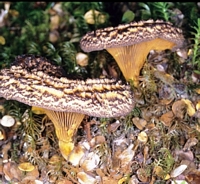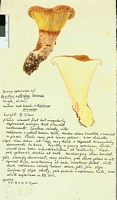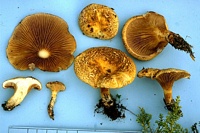Paxillus squarrosus
(=Austropaxillus squarrosus)
|
 | Distinguishable from other endemic species by the dark brown, coarsely hairy cap, and the yellowish flesh, which stains reddish brown on exposure to air. |
|

|

|
Paxillus nothofagi
(=Austropaxillus nothofagi)
|
 | Cap finely felted, compared to the coarse hairy cap of A. squarrosus. |
|

|

|
Austropaxillus macnabbii
|
 | Distinguished from A. squarrosus because the flesh does not change colour when exposed to the air. |
|

|

|